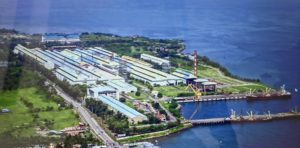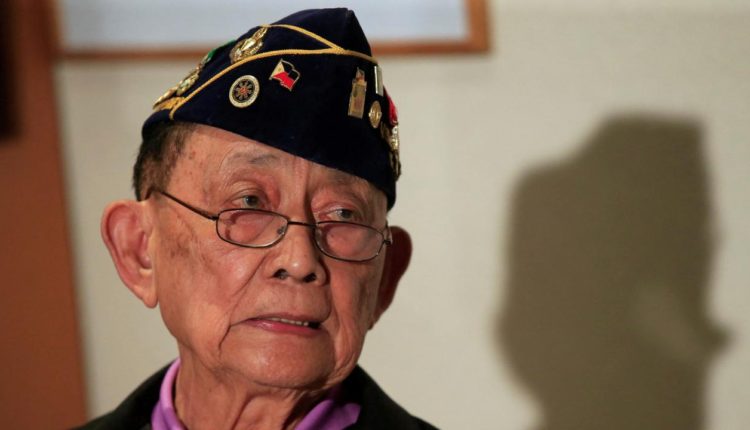‘FVR,’ president behind PH ‘deindustrialization’ dies from COVID
A more somber report on the presidency of Fidel Valdez Ramos
FIDEL Valdez Ramos, the 12th Philippine president (1992 – 1998) and who presided on the country’s descent towards ‘deindustrialization’ and economic control by the oligarchs, has died on Sunday, July 31, 2022, after succumbing to COVID-19, according to mainstream media reports. He was 94.
A known ‘Amboy’ (American Boy), Ramos was a graduate of the United States Military Academy (West Point) and served as a platoon leader of the ‘PEFTOK’ (Philippine Expeditionary Force to Korea) during the United States armed intervention in the Korean (Civil) War.
Ramos also served as head of the PHILCAG (Philippine Civic Action Group) when the United States launched its war of aggression against the people of Vietnam (Vietnam War).
A second cousin on the mother side to President Ferdinand Edralin Marcos, the father of Pres. Ferdinand ‘Bongbong’ Marcos Jr. and with US backing, Ramos fast ascended the military ladder, rising to become the head of the Philippine Constabulary (PC) and vice chief of staff of the Armed Forces of the Philippines.
Originally, the United States created the Philippine Constabulary in 1901 to hunt down Filipino revolutionaries who continue to fight for national independence after US Imperialism’s forcible annexation of the Philippines in the aftermath of its war against Spain in 1898.
The PC has been accused of resorting to torture and other human rights violations, a reputation the PC would retain under Ramos, especially during martial law.
However, instead of getting the blame for the abuses, it was not Ramos, but Pres. Marcos, who got to be accused of tolerating and perpetrating the human rights abuses of the PC.
In February 1986, Ramos joined then Department of National Defense (DND) secretary, Juan Ponce Enrile, in betraying Marcos.
Enrile had tried to stage a coup but it was preempted after it was discovered by Marcos.
The result of this betrayal was the so-called ‘EDSA People Power Revolution’ in 1986 that led to the forcible exile of the Marcos family into Hawaii and the ascension of Corazon Cojuangco Aquino, the wife of former senator Benigno ‘Ninoy’ Aquino Jr.
Aquino was killed at the tarmac of the Manila International Airport (now the ‘Ninoy Aquino International Airport’) in a Cojuangco family plot while flying home from the United States via Malaysia on August 21, 1983, in a vain attempt to replace Marcos as president.
‘Boy Benta’ and the descent to deindustrialization
With his record of human rights abuses buried in the hysteria and glow of the people power revolution, Ramos started his ascent to the country’s highest political office as his popularity continues to increase.
This he did by thwarting several coup attempts launched, first by the so-called ‘Marcos Loyalists’ and later, by the disgruntled junior military officers.

In gratitude, Aquino betrayed Ramon Mitra, a human rights lawyer and anti-Marcos politician, by anointing Ramos as her candidate for president in the 1992 elections.
Aquino made her choice despite earlier promising to abide by the result of the political which chose Mitra as the party’s candidate for president.
After narrowly beating then senator, Miriam Defensor Santiago, Ramos’ promise to turn the Philippines into a ‘tiger economy’ under his ‘Philippines 2000’ slogan, at par with the rising economies of Singapore, Taiwan, South Korea and Hongkong, proved empty.
In the course of his administration, Ramos concentrated on selling off some of the country’s strategic assets vital for its industrialization and national security.
Ramos started off by selling the National Steel Corporation (NSC) in Mindanao to a Malaysian company in 1993, barely a year after his election.
Despite financial constraint and the need to modernize, the NSC is the biggest steelmaker and the only of its kind in Southeast Asia, at the time.
Ramos approved the sale despite fully knowing that a steel industry is vital to any country’s aspiration for industrialization and economic development.
Ramos also made the deal fully knowing that selling the NSC to Malaysia would further weaken the country’s position in its territorial dispute with Malaysia over the territory of Sabah as independent steel production is vital to the development of a national defense industry.
With deliberateness, the Malaysians (Wing Tiek Holdings), run the NSC to ground that only 2 years later (1995), NSC was already laying off workers. Two years after the ‘Asian financial crisis’ of 1997 that worsened its finances, the NSC finally stopped operations.
Simultaneous with this, Ramos, in 1993, also sold off, via joint venture with the Public Estates Authority (PEA), huge tracks of reclaimed land near Manila Bay (Amari land deal scandal).
Two years after becoming president, Ramos, in 1994, next sold, via the stock market, Petron Corporation, the government-owned oil company created by President Marcos to break the market monopoly of Western oil companies Chevron (Caltex/USA) and Shell (British) on behalf of consumers. With no other competitor, gas prices in the country have since then been left to the caprice of oil companies.
In 1995, three years after he became president, Ramos sold off huge portions of the 64-hectares, Fort Bonifacio (formerly Fort McKinley) the training ground and headquarters of the Philippine Army, to the Salim Group of Indonesia via Metro Pacific Group.
Ramos sold the property purportedly to raise fund for the modernization of the Armed Forces, although this never happened.
Also under his term, Ramos started selling-off the country’s electricity assets to companies owned by the country’s oligarchs and even guaranteeing their profit thru the so-called ‘purchase power agreement’(PPA) in return for their building new power plants.
The arrangement where the country’s electricity is under the control of the private sector resulted to the Philippines having the highest cost of electricity in Asia on a per-kilowatt-hour basis, a situation that remains true today.
Just a year before he steeped down, in 1997, Ramos also decided to ‘privatize’ the Metropolitan Waterworks and Sewerage Service (MWSS), splitting the franchise for water services in Metro Manila between two oligarchs, the Ayalas and the Lopezes.
Huge tracks of farmlands in the country, especially in Southern Tagalog (Calabarzon region) were also sold off to real estate developers owned by the oligarchs, particularly the Ayalas, who are already getting a windfall from the earlier selling binges of Ramos. From being the ‘rice granary’ of Southern Luzon that help assure food sufficiency for the country, Calabarzon has become a commercial/industrial region.
As a result of his selling binges, Ramos earned the derisive moniker, ‘Boy Benta,’ a description that has stuck to him even after his death.
Under Ramos, talks for the return and stationing of American troops in the country was also started thru the ‘Visiting Forces Agreement’ (VFA) that was approved by his successor, Pres. Joseph Estrada in 1999.
As a final gesture of his irresponsible leadership, Ramos, in March 1998, barely 3 months before leaving office, approved the signing of the ‘Comprehensive Agreement on Human Rights and International Humanitarian Law (CAHRIHL) between the Communist Party of the Philippines/National Democratic Front of the Philippines (CPP-NDFP) and the Philippine government, along with the ‘JASIG’ (Joint Agreement on Immunity and Safety Guarantee), which was earlier approved by the parties in February 1995.
These documents have since then been used by the CPP to tie the hands of subsequent Philippine administrations to enter into a series of fruitless ‘peace talks’ while also using them as a leverage to free captured and detained CPP leaders in the guise of their being ‘consultants’ to the peace talks.
The charade only ended under President Rodrigo Duterte who, in 2017, decided to scrap altogether any peace talks with the terrorist group and invalidated both the JASIG and CAHRIHL.



